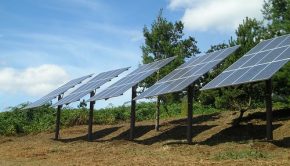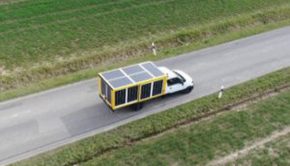Harley-Davidson Stands Behind Electric Motorcycle Bet Despite COVID-19 Headwinds
Harley-Davidson Stands Behind Electric Motorcycle Bet Despite COVID-19 Headwinds

Harley-Davidson, the iconic American motorcycle maker, reaffirmed its commitment to electric models this week in a first-quarter earnings call overshadowed by COVID-19. The company launched its first electric motorcycle, the $29,799 LiveWire, last August.
“We’ll expand our profitable iconic heritage bikes to excite our existing customers,” CEO Jochen Zeitz told investors this week. “We also remain committed to…advancing our efforts in electric,” he added, before the company revealed a 45 percent drop in quarterly profits.
While unlikely to appeal to freewheeling Harley-Davidson purists, the LiveWire was drawing praise even before its launch and has raised eyebrows since thanks to stunts such as beating a Tesla Model 3 in a drag race and traveling 1,000 miles in 24 hours (thanks to fast charging).
Perhaps surprisingly given its classic heritage, Harley-Davidson is something of an early mover in the electric motorcycle market, compared to other traditional manufacturers. Other industry leaders such as Honda and Kawasaki also boast electric models, but to a large extent, the nascent e-motorcycle market is occupied by electric-only startups such as Energica and Zero.
Mopeds and scooters leading the electric charge
Several factors are behind Harley-Davidson’s pursuit of an electric dream.
One is that the firm’s traditional products, sometimes stereotyped as an impulse purchase for men in a midlife crisis, risk falling from fashion for a new generation of riders. Harley-Davidson’s share price had been sliding for years before COVID-19 dealt it a stinging blow.
Another is that Zeitz, a committed environmentalist, is likely keen to make good on a company pledge last year to reduce Harley-Davidson’s environmental impact. In May 2019, the company said it would improve the fuel efficiency of its internal combustion engine models and “lead the electrification of motorcycling with a full EV portfolio, which will further reduce the environmental impact of our motorcycles during use.”
Cracking the electric motorcycle nut is not easy. Alta, a much-hyped electric motorcycle pioneer, “stopped operation in 2018,” according to Adrie Peene, director of distributor Electric Life Store in the Netherlands.
Harley-Davidson itself had to halt initial LiveWire deliveries because of an unspecified charging fault.
The state of the electric motorcycle market contrasts with the trend seen in other two-wheeler segments, where electrification is expanding rapidly — particularly in Asia.
Bloomberg New Energy Finance says that roughly 60 percent of two-wheelers in China were battery-based in 2019. The global share is about 30 percent, but it’s mostly mopeds and scooters, said Nick Albanese, BNEF’s head of new mobility research.
Electric motorcycles only have around 1 percent market penetration, said Albanese, “primarily as a result of limited model availability and cultural factors.”
Motorcycles behind on electrification but revving up
Mopeds and scooters are hardly status symbols, and economic considerations are one of the prime motivations for their purchase. Thanks to fuel savings, they make sense in urban settings where owners are unlikely to suffer range anxiety.
In China and India, electric two-wheelers don’t have to be registered, which has helped push uptake in these countries. Some lead-acid battery-powered two-wheelers, and even a few lithium-ion-based models, are now cheaper than their internal combustion engine counterparts, said Albanese.
There’s now a wide range of electric moped and scooter models to choose from, Albanese said. In India, for instance, there are now more than 80 electric two-wheelers on the market, many priced as low as $500 to $1,000.
Albanese estimates there are now around 100 brands vying for electric two-wheel leadership in China and another 70 or so in the rest of the world.
But “if you look at the top eight two-wheeler manufacturers by sales revenue, really the vast majority of them are in the early stages of committing to electrification,” he said. “Honda has one model available. Yamaha is a similar story. Most incumbents are in quite early days.”
Almost all the attention is still focused on low-performance models. But Albanese predicts that could change as battery performance improves, and there could be a big first-mover advantage for any company that does for motorcycles what Tesla did for cars.
It’s too early to say whether Harley-Davidson could be that company. The business did not respond to a request for comment from GTM, and in the analyst call, Zeitz recognized Harley-Davidson faces an existential threat because of COVID-19.
“It is clear we are at a critical time in our history that requires significant changes to the company,” he said. “But I know we will prevail. I’m confident that with the right focus and changes that I intend to implement swiftly and diligently, we will emerge stronger.”









